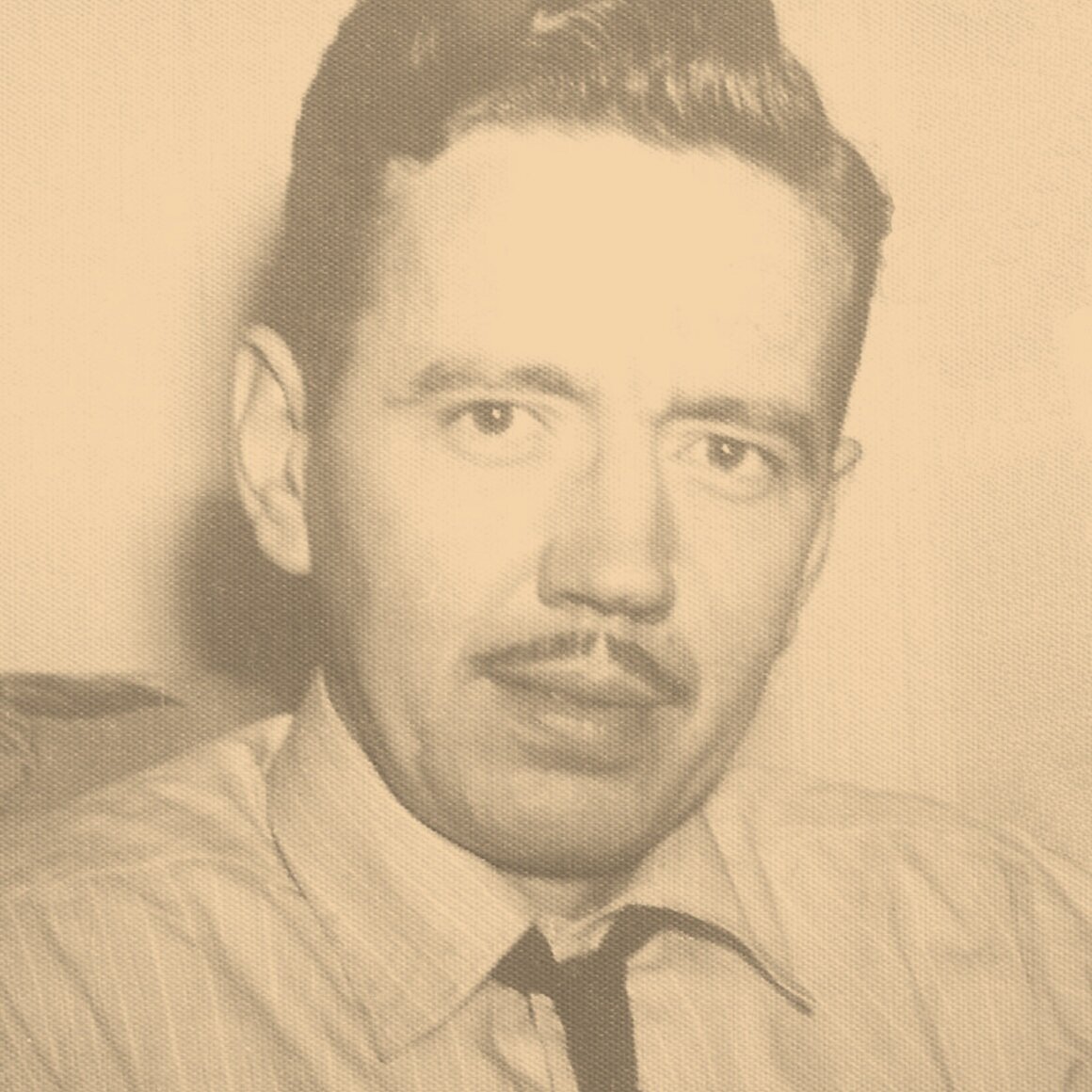THE BOOK OF WALTER
ALL FOR ONE. ONE FOR ALL.
Circa 1942. Our allied war machine roars ahead in defense of freedom, and in Chicago, 28-year-old Walter J. Bade feels compelled to enlist in the cause. Alongside legions of others, he quickly learns the value of teamwork to running a massive military operation. Generals and admirals plotting strategy. Soldiers digging in on the front lines. Cooks, medics and seamstresses supporting wherever needed. Here at home, Walter served American and ally interests as a skilled machinist, crafting parts for military equipment and inspecting others’ work with his keen eye and high standards.
Creating with his hands. Learning from his mates. Teaching them what he knew. Building much more together than each of them could accomplish alone felt right to Walter. No surprise, then, that this experience would fuel Walter’s post-war passion for art, music and the well-made cocktail — and his life-long dream of pursuing the creative arts with a close-knit group of like-minded souls. Our spirits pay tribute to the notion that the right collective effort can fuel the extraordinary. To our loyal Walter distillers, bartenders and drinkers — you’re with us.
LET THE GOOD TIMES ROLL.
Circa 1946. Our boys were coming home by the boatload. America had won the war, and all those soldiers, nurses and Rosie-the-riveters could get back to getting degrees, working jobs, buying homes and raising kids. Soon, American cities and towns boomed, the roadway system grew, factories were re-tooled and rebuilt, and TV entered its golden age. Economic prosperity and the entrepreneurial spirit were producing all kinds of new toys, foods, products and appliances.
With the war behind them, American craftspeople and artists welcomed a sense of security absent for at least a decade. In the art world, abstract expressionism caught fire with Pollock, de Kooning and Rothko leading the movement. In the music world, Sinatra, Armstrong and Sarah Vaughan embodied the daring sounds of the ‘40s and ‘50s. Dapper men and polished women spent late nights at downtown clubs to revel in the music. Couples danced, celebrated. And more often than you might think, they went home together. Among the throngs in Chicago was our own Walter Bade — WWII veteran, snappy dresser and all-around hip cat.
THAT KIND OF TOWN.
Circa 1953. Boom! Thwack! All around Chicago, the sounds of progress: Skyscrapers rising. Factories cranking out parts. Trucks making deliveries. On weekends, the city buzzed with Wrigley Field roars, throngs of beachgoers and kids cruising Lincoln Avenue. In these glorious post-war years, our Walter Bade was busy raising a family. Workdays were spent at the Chicago Department of Water, and on weekends, he, Margaret and their kids would often stroll the Lincoln Park Zoo or visit one of Walter’s favorite haunts, the Art Institute of Chicago. Here, he took great pleasure in the Impressionist collection, the photorealism of Andrew Wyeth and Edward Hopper, and Norman Rockwell’s heartfelt storytelling.
After downtown adventure, it was back home for supper. Then, while Margaret put the kids to bed, Walter would retreat to his workshop for a vodka martini and some jazz. With paint brushes in hand, he’d create scenes of whimsy and humor: A dog chasing a mailman. A car splashing a well-dressed businessman. A blonde beauty kissing a red-faced gent. This was Walter at his very best, a creative soul who knew that surviving these Eisenhower years — materially rewarding, yet constraining and rigid — required an artistic outlet. Of course, a stiff drink didn’t hurt, either.



